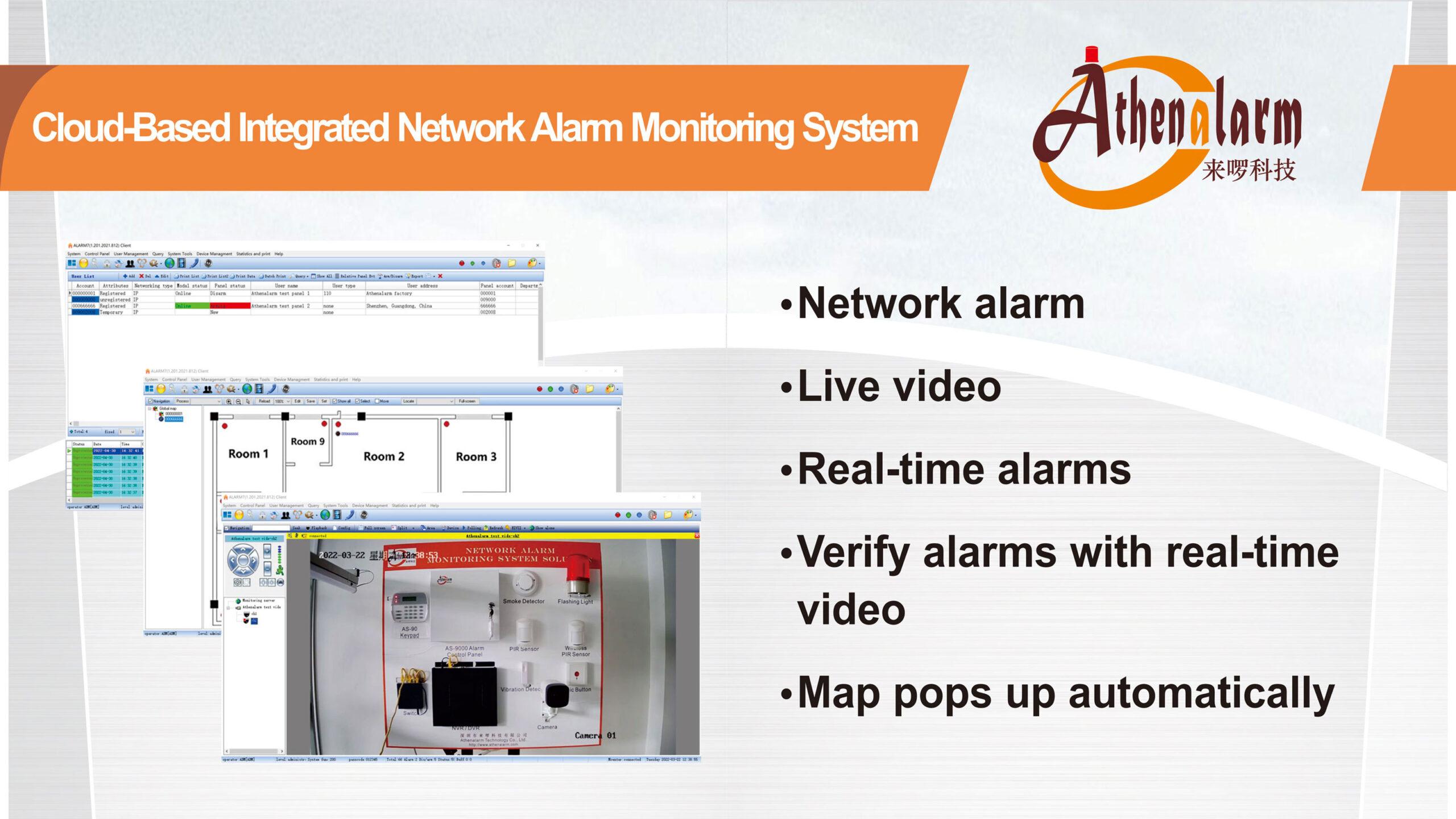



Composition and Classification of Intruder Detectors
1. The composition of the intruder detector
The intruder detector is the input part of the security alarm system, and it is a device used to detect the movement or other actions of the intruder.
An intruder detector usually consists of a sensor, a signal processor and an output interface. Simple intruder detectors can have no signal processor and output interface.
A sensor is a detection and conversion device of a physical quantity. It’s like the eyes, nose, ears of an intruder detector. Intruders always have to make sound, vibrate, block the optical path, exert pressure on the ground or certain objects, destroy the original temperature field and emit infrared light and other physical phenomena when intruding. Sensors use the sensitivity of certain materials to these physical phenomena to perceive and convert them into corresponding electrical signals and electrical parameters (voltage, current, resistance, capacitance, etc.). The processor amplifies, filters, and shapes the electrical signal to become an effective alarm signal. The output interface makes the output of the intruder detector present two output states, that is, the alert state is a potential-free normally closed contact or the on-resistance is not more than 100Ω. In the alarm state, and when no power is applied, the normally closed contact is open or the open circuit resistance is not less than 1MΩ.
2. The classification of the intruder detector
There are many kinds of intruder detectors, and classification will help to understand and master the intruder detectors as a whole.
Intruder detectors can usually be distinguished according to the type of sensor, working method, warning range, transmission method and application occasion.
(1). Classified by sensor type
According to the type of sensor, that is, according to the physical quantity detected by the sensor, there are usually: magnetic switch detectors, vibration detectors, ultrasonic intruder detectors, infrasonic intruder detectors, infrared intruder detectors, microwave intruder detectors and video movement detectors, etc.
The names of detectors are mostly called according to the types of sensors.
(2). Classified according to the working mode
Classified according to the working mode of intruder detectors, there are two types: active intruder detectors and passive intruder detectors.
Passive intruder detector does not need to send signals to the detection site when they work, but rely on the energy of the detected object itself to detect. Normally, a stable signal is output on the sensor, when an intrusion occurs, the stable signal is destroyed, the output contains alarm information, and an alarm signal is sent out after processing. For example, passive infrared intruder detectors use the principle that pyroelectric sensors detect infrared energy emitted by the object being detected. When the measured object moves, the change of the temperature difference between the surrounding environment and the surface temperature of the moving measured object is detected, thereby triggering the alarm output of the detector. So, passive infrared intruder detectors are passive intruder detectors.
The active intruder detector is when it is working, the detector should send some form of energy to the detection site, and form a stable signal on the receiving sensor through reflection or direct radiation. When an intrusion occurs, the stable signal is destroyed, the output contains alarm information, and an alarm signal is sent out after processing. For example, a microwave intruder detector emits microwave energy from a microwave transmitter to form a stable microwave field at the detection site. Once a moving object to be measured invades, the stable microwave field is destroyed, and the microwave receiver receives this change, that is, an alarm signal is output. Therefore, microwave intruder detectors are active detectors. The transmitting device and the receiving sensor of the active detector can be in the same position, such as microwave intruder detector. Also available in different locations, e.g. through-beam active infrared intruder detectors.
Passive intruder detectors include: passive infrared intruder detectors, vibration intruder detectors, voice-activated intruder detectors, video motion detectors, and more.
Active intruder detectors include: microwave intruder detectors, active infrared intruder detectors, ultrasonic intruder detectors, etc.
(3). Classified by warning range
According to the warning range, it can be divided into point control detectors, line control detectors, surface control detectors and space control detectors.
The warning of the point control detector is only one point. When the alarm state of this warning point is broken, an alarm signal will be issued. For example, magnetically controlled switch detectors installed on doors, windows, counters, and detectors will send out an alarm signal when a dangerous situation occurs at this warning point. Magnetic switches and micro switch detectors, pressure sensors are commonly used as point control detectors.
The warning of the line control detector is a straight line range. When a dangerous situation occurs on this warning line, an alarm signal will be sent. For example, an active infrared intruder detector or a laser intruder detector, first emits a beam of infrared light or laser light from an infrared source or laser, which is received by the receiver. When the infrared light and laser light are blocked, the detector sends out an alarm signal. Active infrared, laser and inductive intruder detectors are commonly used as wire-controlled detectors.
The warning range of the surface control detector is a surface, such as the perimeter fence of warehouses and farms. When hazards appear on the warning surface, an alarm signal is sent. If the vibration intruder detector is installed on a wall, when any point on the wall is vibrated, it will send out an alarm signal. Vibration intruder detectors, fence-type passive infrared intruder detectors, parallel line electric field distortion detectors, etc. are commonly used as surface control detectors.
The warning range of the space control detector is a space, such as archives, reference rooms, weapon depots, etc. When an intrusion hazard occurs anywhere in the warning space, an alarm signal will be sent. For example, in the space guarded by the microwave intruder detector, if an intruder invades from any part of the door, window, ceiling or floor, an alarm signal will be generated. Sound-activated intruder detectors, ultrasonic intruder detectors, microwave intruder detectors, passive infrared intruder detectors, microwave infrared composite detectors and other detectors are commonly used as space defense and control detectors.
(4). Classified according to the detection signal transmission mode
According to the detection signal transmission mode, intruder detectors can be divided into wired detectors and wireless detectors. Intruder detectors whose detection signals are transmitted by transmission lines (such as twisted pairs, multi-core wires, wires, cables, etc.) are called wired transmission detectors. This is the way that is widely used at present. The intruder detector whose detection signal is modulated and then transmitted by space electromagnetic waves is called a wireless transmission detector. In the case of preventing the site from being scattered or it is inconvenient to set up transmission lines, the wireless transmission detector has its unique function. In order to realize wireless transmission, a wireless receiver must be added to the alarm controller.
(5). Classified by application
According to the application, intruder detectors can be divided into two types: outdoor intruder detectors and indoor intruder detectors.
Outdoor intruder detectors can be divided into building perimeter detectors and perimeter detectors. Perimeter detectors are used to guard the perimeter of the area and are the first line of defense for defenders, such as leaking cable detectors, electronic fence perimeter detectors, etc. Building perimeter detectors are used to guard against the perimeter of buildings in the area, and are the second line of defense for defenders, such as active infrared intruder detectors, outdoor microwave intruder detectors, vibration detectors, etc.
Indoor intruder detectors are the last line of defense against intruders. Such as micro switch detectors, vibration detectors, passive infrared intruder detectors, etc.
